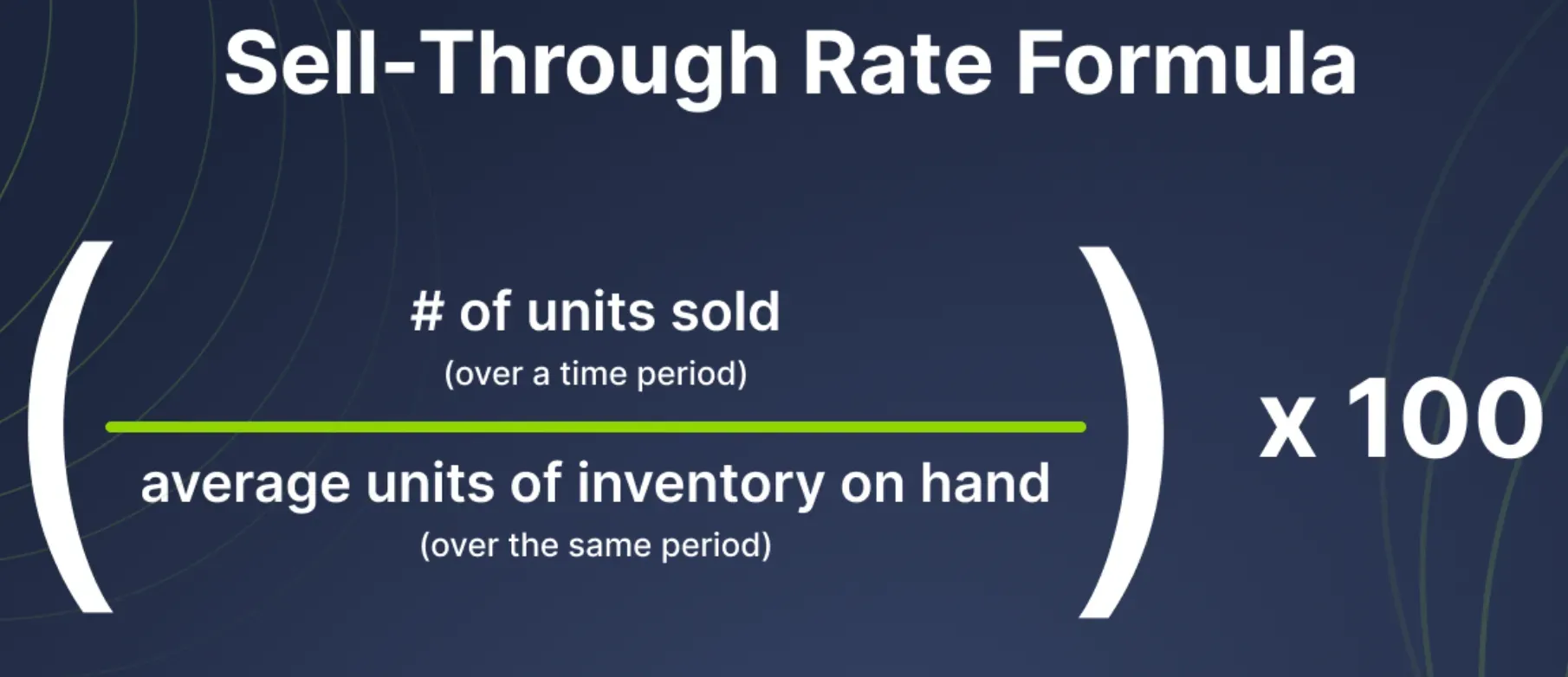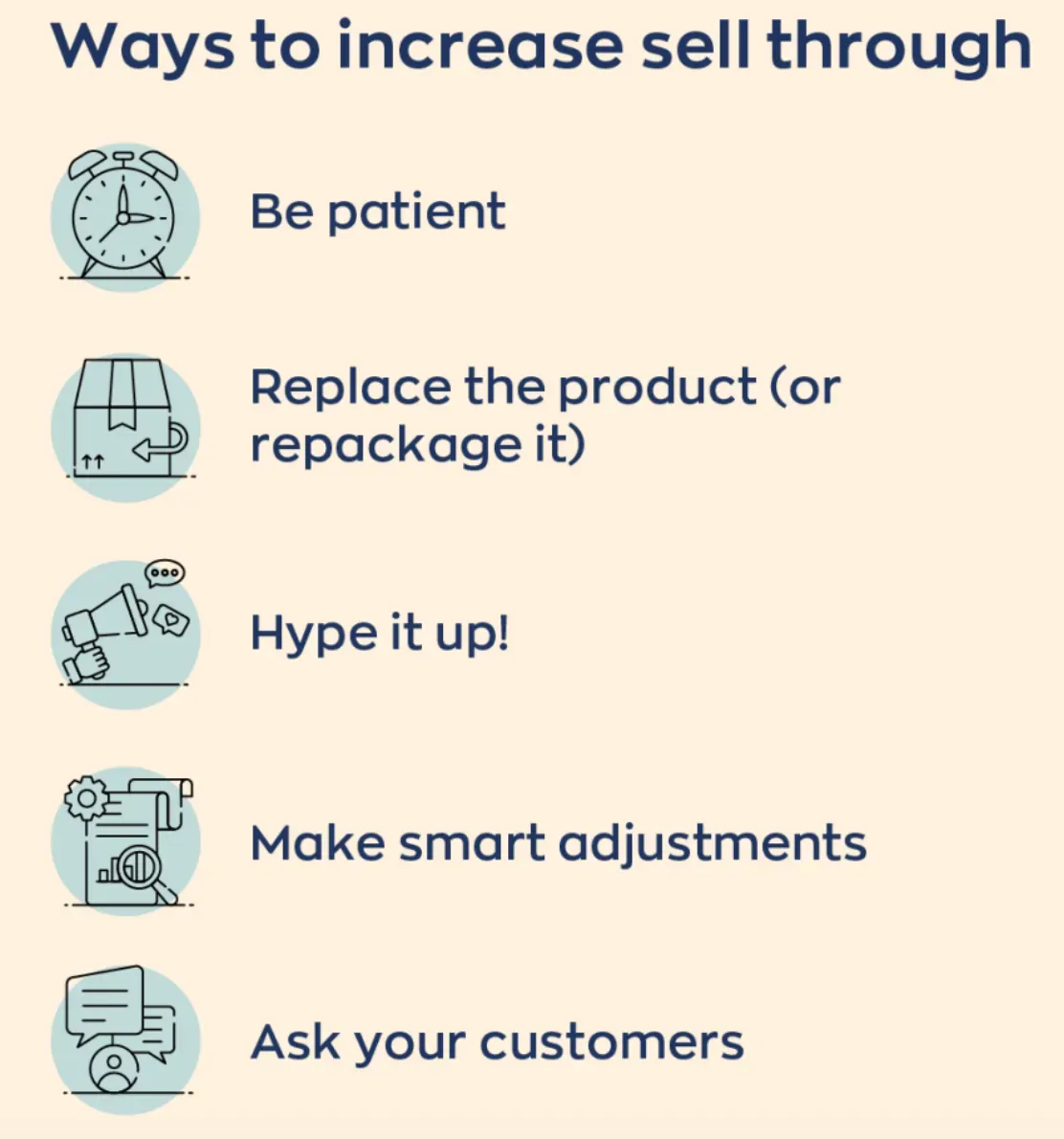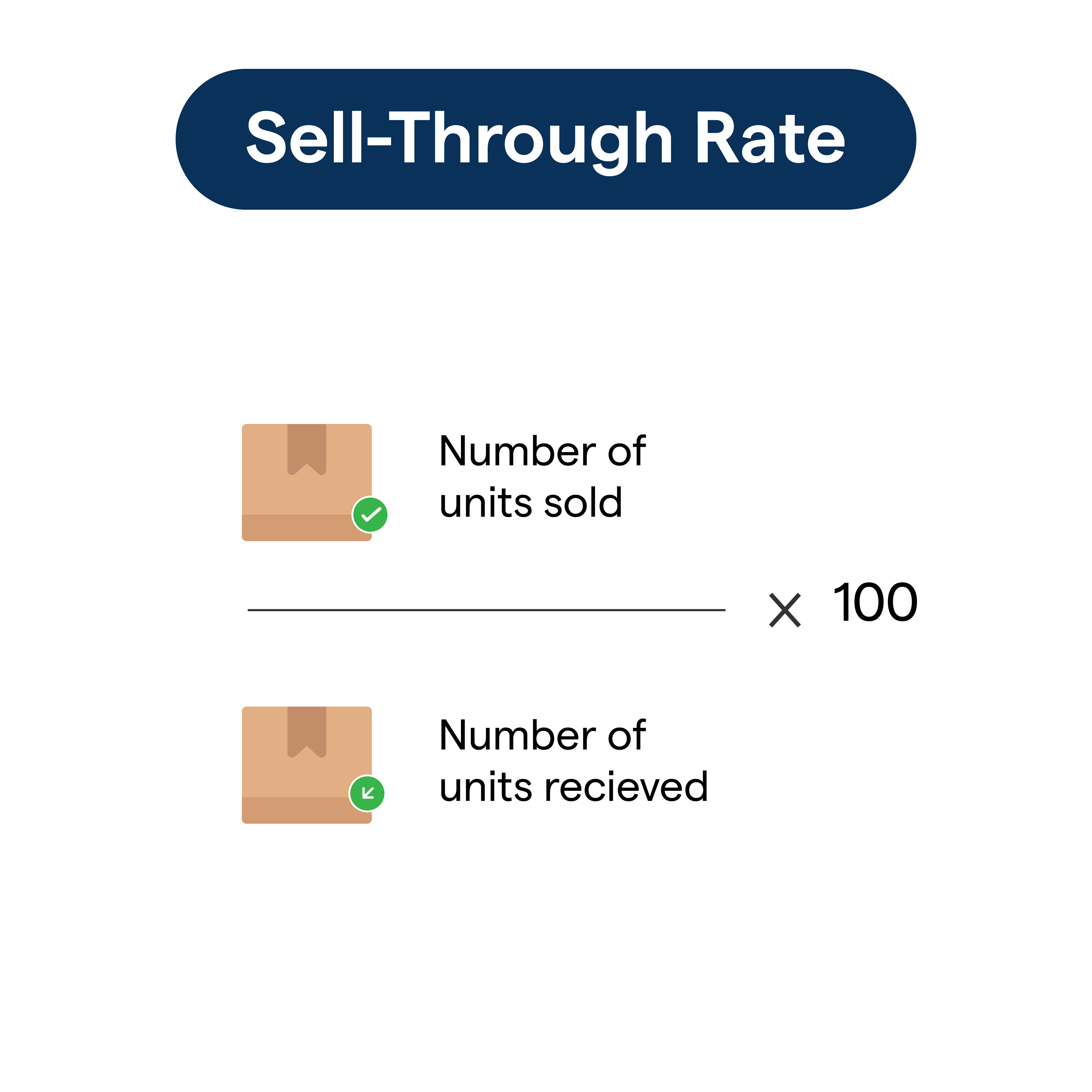What is the Sell-through Rate?
The sell-through rate is a crucial metric that businesses use to measure the efficiency of their inventory and sales operations. It represents the percentage of units sold from the supplied inventory within a specific time frame, giving a clear insight into product performance in the market.
Calculating Sell-through Rate: A Simple Formula
Knowing how to calculate the sell-through rate is fundamental to understanding its importance. It's a simple formula that can easily be mastered:
Sell-through Rate = (Number of units sold / Beginning inventory) × 100
For example, if a store had 500 units in stock at the beginning of the month and sold 250 of those units by the end of the month, the sell-through rate would be:
Sell-through Rate = (250 / 500) × 100 = 50%

The Spectrum: Interpretation
Sell-through rates fall into a spectrum from low to high. A high sell-through rate signifies that the product is selling well and the demand for it is strong. Conversely, a low rate signifies slow-moving inventory and potential stagnation in sales.
The Bigger Picture: Industry Averages
While the sell-through rate in isolation is insightful, it becomes even more powerful when compared to industry averages. By comparing one's own sell-through rate with competitors or industry standards, businesses can better benchmark their performance.
Who leverages the Sell-through Rate?
Now that we have a firm grasp on what the sell-through rate is, let's take a moment to look at the people involved in its analysis and overall impact.
Business Owners and Managers
These are the primary decision-makers in a company who should actively monitor sell-through rates. Business owners and managers use the metric to inform their strategic decisions about inventory, pricing, and inventory turnover.
Retailers and Brands
Retailers and brands, both big and small, rely on sell-through rate data to make strategic decisions related to product placement, store layout, and marketing.
Suppliers and Manufacturers
Suppliers and manufacturers need to be closely aware of the sell-through rates of their products. These numbers help them forecast future production and supply volumes while sustaining healthy relationships with retailers and brands.
Analysts and Consultants
Sell-through rate data can also be a treasure trove for industry analysts and consultants. They use this information to provide insights and recommendations to retailers, manufacturers, and businesses across diverse sectors.
Where do we leverage the Sell-through Rate?
Let's explore the different real-world scenarios where sell-through rate becomes a crucial metric, guiding businesses and retailers.

Brick-and-Mortar Stores
Physical stores rely on sell-through rates to optimize their inventory strategies, pricing, and product assortment. They use this data to identify fast-selling items and slow-movers, allowing them to make informed decisions about procurement, product promotion, and shelf space allocation.
Online Retailers
E-commerce platforms, like Amazon, eBay, and Shopify, also pay close attention to sell-through rates. They use this data to build trust with customers, provide valuable market insights to suppliers, and make strategic decisions about product promotion, pricing, and inventory management.
Industry-wide Implications
Beyond individual businesses, sell-through rates impact entire industries. When similar products have notably different sell-through rates, businesses can draw lessons from these comparisons and learn about their strengths and weaknesses relative to competitors.
When do we leverage the Sell-through Rate?
With a solid foundation of the factors surrounding sell-through rates, let's explore the importance of timing in tracking, analyzing, and adapting to these crucial numbers.
The Importance of Time Frames
Sell-through rates need to be set against specific time frames, e.g., weekly, monthly, or yearly, as each can reveal unique insights. Weekly rates help identify top sellers and seasonal trends, whereas monthly and yearly data reveal longer-term market shifts and business performance.
Selling Seasons
Seasonal trends profoundly affect sell-through rates and should be considered when analyzing data. Christmas, Black Friday, and other holidays usually generate higher sell-through rates, while slow periods, such as post-holiday sales seasons, can have lower rates.
Monitoring and Adapting
Constantly monitoring sell-through rates and remaining adaptable are key to business success. They can identify opportunities to restock high-performing items and adjust pricing or promotional strategies for underperforming products.
Why: The Significance of Sell-through Rate
Now that we have a comprehensive understanding of the sell-through rate, let's examine why it’s so important for businesses.

Inventory Management
Sell-through rates inform a retailer’s purchasing decisions. A high rate suggests the need to restock items or increase order volumes, while a low rate might prompt businesses to adjust procurement strategies or halt orders to clear existing inventory.
Profitability
Sell-through rates impact a business’s bottom line by maximizing revenues and minimizing losses driven by obsolete inventory. Keeping a close eye on these rates allows companies to adapt swiftly to market shifts and protect their financial health.
Customer Demand
This metric helps businesses analyze and understand customer demand trends. If a product consistently has a high sell-through rate, it's probably a customer favorite, while a low rate indicates that it might be time to reconsider the product offering.
Pricing Strategies
Sell-through rate analysis supports pricing optimization. High rates suggest that the product pricing may be too low and could be adjusted upwards, whereas low rates may indicate that pricing is too high and a deterrent to sales.
How do we leverage the Sell-through Rate?
Lastly, we'll explore ways businesses can harness the power of sell-through rates to drive growth and achieve long-term success.
Embracing Technology
Modern businesses can leverage software and tools to track and analyze sell-through rates. These technologies automate the process and provide actionable insights for decision-makers.
Staying Adaptable
To fully take advantage of sell-through rate data, businesses must remain agile and adaptable to market fluctuations, economic trends, and industry developments. This includes staying abreast of competitors' strategies and adapting to new opportunities.
Collaborating with Partners
Sharing and comparing sell-through rate data with suppliers, manufacturers, and other partners can foster collaboration and promote win-win situations. This will result in optimized supply chain management, better inventory control, and improved customer satisfaction.
Ongoing Education and Learning
Keeping up with new trends and industry developments can help businesses maintain a competitive edge. Staying informed on best practices and learning from others can offer valuable insights and spark innovative ideas to leverage sell-through rates effectively.
The sell-through rate is a vital measurement of a product's appeal and market performance in the dynamic business landscape. This comprehensive glossary page has covered what the sell-through rate is, who stakeholders are, where it operates when to consider it, why it is important, and how to leverage it. May this enrich your understanding and help you excel in the world of retail and business.
Best Practices to Optimize Sell-through Rate
While we've explored what sell-through rate is and why it matters, it's essential to know how to apply this knowledge practically. Let's discuss the best practices to optimize your sell-through rate. This isn't an exhaustive list, but it should give you a solid starting point to maximize your product's performance.

Understanding Your Customers
The first step to optimizing your sell-through rate is to have a deep understanding of your customers. Identify who your target customers are, their buying habits, preferences, and behavior. By knowing what drives your customers to purchase your products, you can tailor your strategies to meet their needs.
Examples: Surveys, focus groups, and observation can help gather valuable customer insights. Customer relationship management (CRM) platforms can provide a wealth of data about purchasing habits and trends.
Accurate Forecasting
The next key practice is accurate forecasting. Correctly predicting future sales using historical data can help you manage your inventory more effectively. This way, you can ensure you have the right product quantities at the right time, reducing the risk of overstocking or stockouts.
Examples: Use past sales data and consider seasonality, market trends, and economic indicators to make accurate sales forecasts.
Effective Marketing and Promotion
Running effective marketing campaigns and promotions can significantly improve sell-through rates. This can include online advertising, in-store promotions, loyalty programs, or targeted email campaigns. Essentially, you need to get your products seen and noticed by your customers.
Examples: Run promotional campaigns during peak sales periods. Use email marketing to reach customers directly with personalized offers.
Pricing Strategy
It’s crucial to price your products right. Price your products too high, and you risk losing potential buyers to competitors. Price them too low, and you may compromise profitability. Monitor your sell-through rate to understand when you may need to adjust your prices.
Examples: Implement dynamic pricing strategies where prices are adjusted in real time based on market demand.
Product Presentation
The way you present your products can have a big impact on your sell-through rate. Good product pictures and descriptions can attract customers and give them a clear idea of what they are buying, thus helping to boost sales.
Examples: Use high-quality images and detailed product descriptions on your online store. In brick-and-mortar stores, ensure your products are display-friendly and catchy to the eye.
Constant Review and Monitoring
The best results will come from constantly reviewing and refining your strategies based on real-world results. Keep a close eye on your inventory and sales data. Adjust your strategies as needed to continually optimize your sell-through rate.
Examples: Use business intelligence software to regularly monitor your inventory and sales data. Implement A/B testing to compare different strategies and identify what works best.
Frequently Asked Questions (FAQs)
What is the Sell-through Rate?
The Sell-through Rate is the percentage of inventory sold within a specific period. It measures how well products are selling, relating it to the stock available.
How is the Sell-through Rate calculated?
To calculate the Sell-through Rate, you should divide the number of units sold by the initial quantity of items in stock and multiply it by 100.
What is the difference between Sell-through and Sell-in?
Sell-through refers to the rate at which products are sold to end customers, and Sell-in represents the rate at which products are sold to retailers or distributors.
Why is the Sell-through Rate important to businesses?
The rate is vital for maintaining inventory turnover, reducing carrying costs, identifying popular and slow-moving goods, and enhancing supply chain management.
How can businesses improve their Sell-through Rate?
Strategies include offering discounts and promotions, accurate sales forecasting, upselling and cross-selling, and product bundling techniques.

